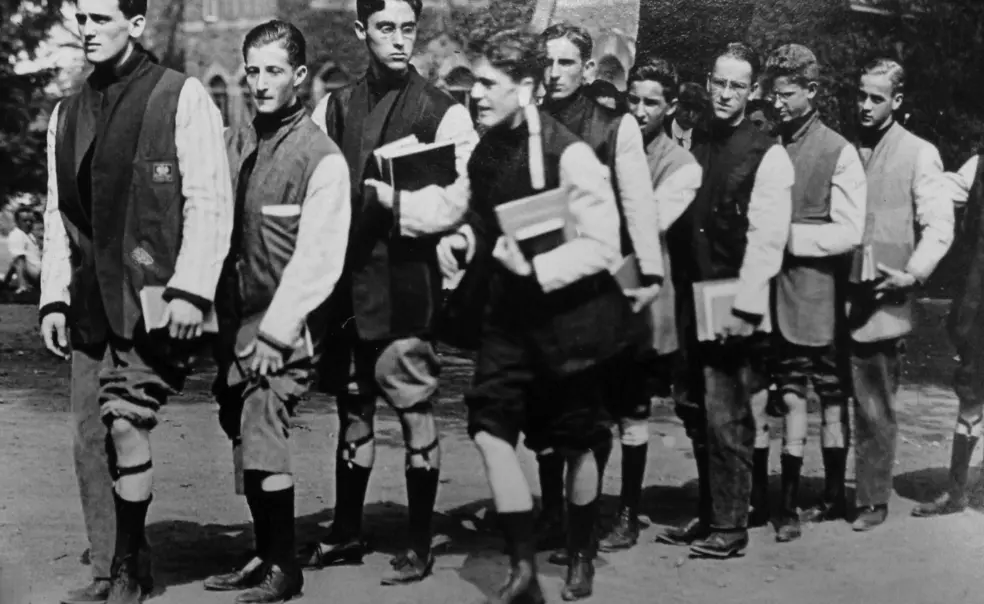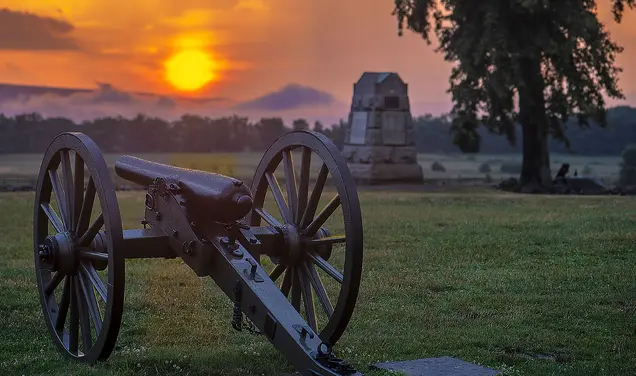The questions have changed. I mean, the questions always change. That’s why we keep writing history.
— Professor Emerita Nell Painter
The Princeton History conversation recently has involved a great deal of role playing at a far remove – namely, if you were Woodrow Wilson, would you have signed an order effectively segregating the civil service? Or taken the United States into World War I, or written snotty letters to African American applicants to Princeton, or hired the first preceptors, or compromised with Congress on the League of Nations, or whatever? It’s an enticing exercise, involving both an omniscient consideration of past events and an examination of our own standards and priorities, all rolled into one. There are many valuable lessons to be learned, and (I would argue, anyway) the most valuable are those we learn about ourselves. But in doing that, what are we really learning about history?
Wilson is far from the only trigger for such consideration, and sometimes we don’t dwell on, if only for simplicity’s sake, other striking examples of Mr. Peabody’s WABAC Machine questions like: If Lincoln’s best general had been openly gay, would he have been put in charge after Meade blew the Confederate escape following Gettysburg? Or if Mount Holyoke’s 1901 valedictorian had imputed Special Relativity in 1905 instead of Einstein, when would anyone have taken notice? If these sound ludicrous to you, you might want to stop for a second and consider why, then go on to a comparison with the Wilson questions, and start to develop a construct in your own mind of those things we should critique in history as distinguished from those things we should learn from history. Or at an absolute minimum, understand that those are two extremely different exercises.
Which is how I ended up deep in the world of horsing. No, Aunt Edna, not the sleek wonders of dressage or the rebirth of Princeton’s polo team, but the sanctioned, systematized, glorified harassment of defenseless freshmen by a group of clever, vindictive, rule-waving sophomores who have schemed and nursed animosities for a year in order to inflict it. Sounds like a really great time, eh? Where in God’s name could such a thing be allowed, never mind tacitly regarded as a societal enhancement? Well, glossing over whatever goes on in the modern version of fraternity and sorority rush at thousands of American colleges (which would never involve such things, of course), this is a literal description of the Princeton of a century ago. And – this is too good to miss – they called it horsing because, intriguingly, the terms “hazing” and “rush” and even “flour picture” (huh?) were already occupied by other abusive practices.
This is getting a little complex (or, if you insist on being snide, esoteric), so let’s go back and look at this in an orderly way, as any Distinguished Historian such as yourself would.
The emergence of colleges into powerful social institutions in the United States following the Civil War included a wide range of developments. The greatly expanded infrastructure of the country – the North, anyway – allowed far more mobility, with significant numbers of students traveling a distance to their school, and a new outward-focused competitive consciousness that drove recruiting students from distant states, poaching professors, starting new types of courses, an explosion of new public colleges under the Federal Land Grant Act, and (you were waiting for this one) intercollegiate athletics. It’s simple to infer from this the correlated rise in school spirit, involving everything from college colors to the songs that praised them to huge donor influence (helloooooo, John C. Green) to – here we go – the increasingly complex indoctrination of new college recruits to the supposedly unique qualities of their new alma mater, and to their resulting need to pledge undying loyalty. In many places, in many cases, it was decided to beat this into them.
Identification with one’s graduating class at Princeton always had been strong, reinforced by the unusual geographic range of its alumni and their seemingly insatiable desire to return to reunite, when possible, at Commencement. This intensified in the 1860s (orange ribbons were first worn by the sophomore Class of 1869’s baseball team) and became structural in the form of rush (at other campuses the term became applied to fraternity recruitment, but at Princeton there were no fraternities allowed by President James McCosh and the faculty). Each year, the freshmen would schedule a “secret” election of class officers; the sophomores then would “discover” its existence and block the way in en masse. A melee would ensue, various bruises and broken bones might occur, and all would feel pride or soreness or (likely) both. This became more ornate, with standardized costumes and orders of battle, well into the 20th century. It was joined along the way by the Cannon Rush: On an announced date following the Election Rush, the sophomores would surround the large cannon on Cannon Green, and the freshmen would attempt to wrest control of it, in a king-of-the-hill style assault. And then there was Baseball Rush, another bilateral fracas before the first sophomore-freshman baseball game of the fall. And then (with a nod to technology) beginning in 1911 or so, the Flour Picture, a sort of indirect rush in which the freshmen, gathered on the steps of Whig Hall for their ostensible class photograph, were pelted from the roof by a mixture of rotten liquids/eggs and flour by their sophomore tormentors. All the rushes came to an abrupt halt in the Fall of 1915, when freshman Stockton Wells fell dead of a heart attack during Election Rush, but the flour picture endured until 1925 (and an unfortunate incident with acid mixed into the liquids), after which it was replaced by a tug-of-war.
On a more personal level, meanwhile, hazing of individual freshmen – which had existed in isolated ways before the Civil War as well – became more codified and hooliganistic thereafter, with shaved heads, soakings, and various injured limbs accruing to those newbies who transgressed upon any number of irrational and often unclear behavior standards, from walking on various lawns to wearing various headgear to smoking to smiling the wrong way at an upperclassman. Since it was a mark of honor never to tell who had beaten you up, the personal abuse – sometimes one-on-one, sometimes in gangs – escalated in subtle ways until 1894. Then, after a series of alarmed newspaper articles and a scare in which a student thrown into the canal was thought to have drowned, the student body agreed to replace hazing with horsing, which had much clearer rules, relatively mild punishments – mostly coerced appearance or behavior like a moron (see above) – and, most important, only during the first 10 days of the school year. Then of course came the class rushes. Various abuses (many of the head-shaving variety) persisted, however, and by 1914 horsing was applied arbitrarily, usually upon the quiet, friendless members of the class who needed the humility lesson least, and not on the preppies and athletes who entered well-connected (do you seriously think anyone had the guts to horse Hobey Baker? He wasn’t a practitioner as a sophomore, either). So the students then dumped the subjective degradation altogether and adopted instead an explicit and strict list of inviolate behaviors intended to chasten all the freshmen, all the time – on the list of 21 rules (!) my favorite is “Playing marbles is a privilege of Juniors only.”
In the freshman-harassing sphere, Cane Spree gradually emerged as the sole survivor, principally because it was civilized almost instantaneously. With ornate canes being the mark of a gentleman (fop?) in the 1860s, sophomores decided that the frosh were unworthy of them. This resulted in an initial pitched battle of dozens of underclassmen cane-fighting at (you couldn’t possibly make this up) President McCosh’s inauguration in 1868. After some subsequent pitched battles on Nassau Street, the format within 10 years settled into the orderly matchups of three champions from each class, often with a large tug-of-war between the rest of the attendees afterward – strikingly like today’s descendant Cane Spree, with its many contests the last vestige of the great (?) undergraduate class rivalries.
But consider for a moment: As recently as 1914, horsing, all three rushes, the flour picture, and cane spree were all up and running simultaneously to provide good, clean fun and fraternal bonding upon the unsuspecting freshman and his appendages in his formative semester, all with the full knowledge and complicity of the trustees, the administration, and the faculty. His parents got to pay tuition, room, and board for this (never mind any incidental medical expenses). Given that, your assignment for the week is to go back to the third paragraph above and consider a little trap I set up. I called hazing, rushes, horsing, and the flour picture abusive practices (cane wrestling, at least, was voluntary). Are they really? Were they then? Or are they only abusive now, after the fact? Consider Nell Painter’s seemingly simple, but deeply profound, observation above. Consider the world in 1914. Discuss.
Gregg Lange ’70 is a member of the Princetoniana Committee and the Alumni Council Committee on Reunions, an Alumni Schools Committee volunteer, and a trustee of WPRB radio. He was a recipient of the Alumni Council’s Award for Service to Princeton at Reunions 2010.











No responses yet